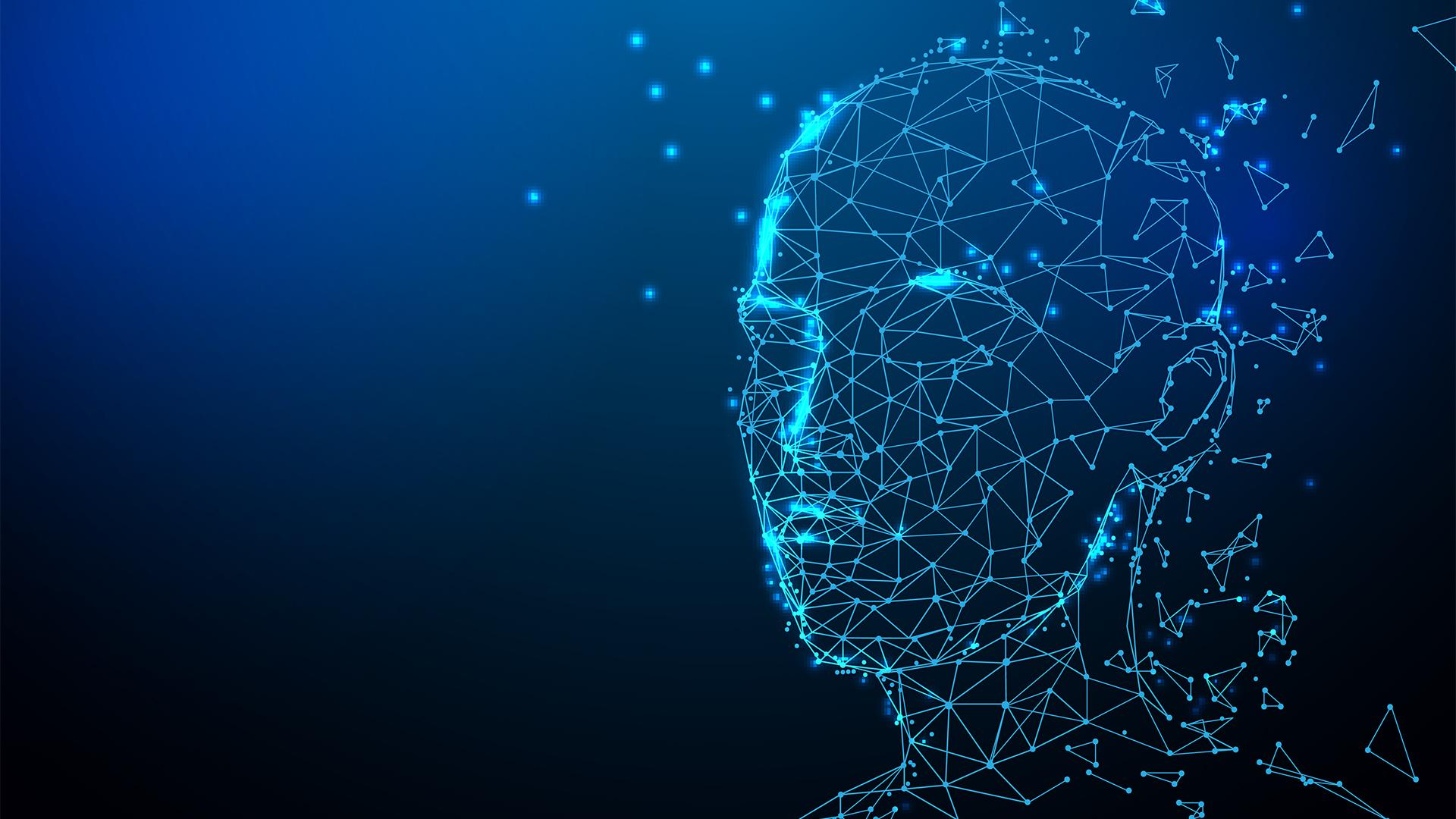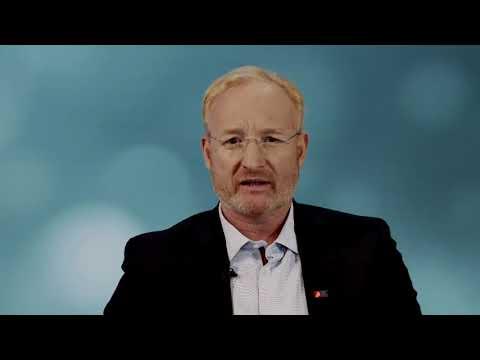Artificial intelligence
Last updated: 2.05.2022
Artificial intelligence (AI) is the ability of computers and machines to perform mental tasks commonly associated with humans, such as learning, reasoning and problem solving. Although core AI technologies, including neural networks, deep learning and rule-based systems, have been known for a long time, they have developed dramatically in the past decade, bringing AI to the forefront of our lives. AI is here to stay and promises to be a disruptive force for years to come.
In September 2020 staff from across the EPO participated in our first Tech Day virtual conference to listen to leading thinkers and specialists, including Dutch futurist Jarno Duursma, as well as to share their own talents and knowledge. The topic of AI fired the imagination of participants as they discussed the challenges and opportunities from emerging digital technologies.
The role of patents in an AI driven world
This conference provided a platform for policymakers, investors, inventors, SMEs, academics, and IP professionals to exchange views and share expertise on AI and IP rights. It considered the latest initiatives relating to AI at the level of European institutions. View the full conference recordings or watch the highlights.
The conference shone a light on the latest strategic projects between the EPO and its major partner patent offices and looked at the legal aspects and tools that could influence their work. Chief Economist Yann Ménière presented the key findings from the EPO's most recent study entitled "Patents and the Fourth Industrial Revolution". The conference additionally focused on SMEs and their vital role in fostering a diverse European innovation landscape in the area of AI.
This conference built upon the success of the EPO's first public conference on AI, hosted in May 2018
- AI changing our world
-
Image

The rapid expansion of AI in recent years is due to several interrelated factors: improvements in processing power, the development of powerful computing architectures specifically designed for AI applications, the availability of large volumes of data (critical for training AI models) and better AI core models and techniques (mostly neural networks and deep learning).
Tasks that humans can easily and intuitively perform, such as recognising a face in an image, have traditionally presented a challenge for automated data processing. Today, however, AI is able to match or even exceed our capability in these areas.
Many AI models and techniques are application-agnostic - in other words, they can easily be used in all technology fields. This "out-the-box" property, when combined with big data, cloud computing, 5G or the internet of things (IoT), enables AI to solve technical problems in almost any domain.
AI in 4IR
- Healthcare informatics and bioinformatics: clinical sample screening and decision-making are as good as or even better than by a human operator. AI will play a growing role in identifying protein structures, targeting drug interactions and analysing DNA and RNA sequences.
- Automotive: self-driving vehicle technology will require real-time processing of a massive amount of V2V (vehicle to vehicle) and V2X (vehicle to everything) data.
- Industry: automated predictive maintenance, data analysis, process design and defect detection will help factories to run efficiently and to consistently produce high-quality products.
Rise in AI-related patent applications
A recent EPO study shows that the number of international patent families in core AI technologies applied to smart connected objects has been increasing at an average annual rate of 54.6% since 2010, albeit with relatively low absolute numbers so far.
Global growth of international patent families for Core AI, 2008-2018
Source: EPO (2020). Patents and the Fourth Industrial Revolution: the global technology trends enabling the data-driven economy. December 2020
Note: The chart represents international patent families (IPFs) in core AI technologies that are related to smart connected objects. Each IPF relates to a single invention for which patent applications have been filed and published at several patent offices. It is a reliable proxy for inventive activity because it provides a degree of control for patent quality by representing only inventions for which the inventor considers the value sufficient to seek protection internationally.
AI has been one of the key drivers of the massive increase in 4IR-related patenting over the past decade. Between 2010 and 2018, global patent filings for technologies involving smart connected objects grew at an average annual rate of almost 20% - nearly five times faster than the average of all technology fields. AI is particularly important in the dynamic fields of data management (from the production of data to feedback execution) and user interfaces (such a voice and face recognition), and also features extensively in application domains (smart consumer goods, smart healthcare, smart factories, smart agriculture or self-driving vehicles).
- AI and patentability
-
Image

The EPO has responded to the emergence of AI in patent applications by refining its approach to patentability of inventions involving AI.
AI is considered a branch of computer science, and therefore, inventions involving AI are considered "computer-implemented inventions" (CII). In this context, the Guidelines for Examination in the EPO, F-IV, 3.9 define the term CII as inventions which involve computers, computer networks or other programmable apparatus, whereby at least one feature is realised by means of a program.
Computer-implemented inventions are treated differently by patent offices in different regions of the world. Article 52(2)(c) of the European Patent Convention (EPC) excludes computer programs "as such" from patent protection. Nevertheless, inventions involving software are not excluded from patentability as long as they have a technical character.
Over the years, the case law of the EPO Boards of Appeal has clarified the implications of Article 52 EPC, establishing a stable and predictable framework for the patentability of computer-implemented inventions, including inventions related to AI. This framework is reflected in the EPO's Guidelines for Examination.
Like any other invention, in order to be patentable under the EPC, a computer-implemented invention must not be excluded from patentability (Article 52(2) and (3) EPC) and must fulfil the patentability requirements of novelty, inventive step and susceptibility of industrial application (Article 52(1) EPC). The technical character of the invention is important when assessing whether these requirements are met.
The same approach applies to computer-implemented inventions related to AI (see, in particular, the Guidelines for Examination in the EPO, G-II, 3.3.1 Artificial intelligence and machine learning).
AI is based on computational models and mathematical algorithms which are per se of an abstract nature. Nevertheless, patents may be granted when AI leaves the abstract realm by applying it to solve a technical problem in a field of technology. For example, the use of a neural network in a heart-monitoring apparatus for the purpose of identifying irregular heartbeats makes a technical contribution. The classification of digital images, videos, audio or speech signals based on low-level features (e.g. edges or pixel attributes for images) are other typical technical applications of AI. Further examples are listed in the Guidelines for Examination in the EPO, G-II, 3.3 Mathematical methods.
In addition, a technical solution to a technical problem can also be provided when the invention is directed to a specific technical implementation of AI, i.e. one which is motivated by technical considerations of the internal functioning of a computer (e.g. a specific technical implementation of neural networks by means of graphics processing units (GPUs)).
The EPC thus enables the EPO to grant patents for inventions in many fields of technology in which AI finds a technical application. Such fields include, but are not limited to, medical devices, the automotive sector, aerospace, industrial control, additive manufacturing, communication/media technology, including voice recognition and video compression, and also the computer, processor or computer network itself.
The EPO also engages with its external stakeholders around the topic of patenting AI. In two recent events, Artificial intelligence: a patent practitioner's perspective and Artificial intelligence: an examiner's perspective, EPO experts exchanged ideas with EPO users as well as with experts from national patent offices on several AI examples covering a broad range of technologies.

Razik Menidjel, Chief Operating Officer Operations "Patent applications involving AI are becoming more commonplace in a number of technical areas. In recent years, the European Patent Office has closely followed the developments in 4IR and emerging technologies, including AI, and has adapted its examination practices accordingly. I am particularly pleased with the revised Guidelines for Examination, which provide a rigorous methodology leading to legal certainty and predictability, not only for AI applications but for computer-implemented inventions in general. This is part of our commitment to quality, which is a cornerstone of the EPO's Strategic Plan 2023."
- Inventorship of AI inventions
-
Image

The impressive developments in the area of AI have sparked suggestions that AI could invent just as humans can and that it should be accepted as inventor.
From the perspective of inventorship, three categories of AI inventions may be identified:
- human-made inventions using AI for the verification of the outcome
- inventions in which a human identifies a problem and uses AI to find a solution
- AI-made inventions, in which AI identifies a problem and proposes a solution without human intervention.
In the first two categories, AI is used as a tool for human inventors, augmenting their capabilities. In the third category (AI-made inventions), scientists seem to agree that AI which could invent independently of human direction, instruction and oversight is a matter of undefined future and thus science fiction.
There is a common understanding that the inventor is a human being: the person who created the invention by their own creative activity. This has been confirmed by an academic study on AI inventorship commissioned by the EPO and in the discussions with the EPC contracting states.
Furthermore, the EPC requires that an inventor designated in the application be a human being and not a machine. The designation of an inventor bears a series of legal consequences, notably to ensure that the designated inventor is the legitimate one and that they can benefit from rights linked to this status. To exercise these rights, the inventor must have a legal personality that AI systems or machines do not enjoy (see Articles 60 and 62 EPC).
The legal concept of inventorship requiring a human being to be the inventor was challenged when two applications indicating an AI system (DABUS) as the inventor were filed with various patent offices worldwide. In 2019, the EPO refused these applications (EP 18275163, EP 18275174) on the ground that the EPC requires the inventor to be a natural person. The applicant filed appeals which were dismissed by the EPO Legal Board of Appeal in oral proceedings on 21 December 2021 (cases J 8/20 and J 9/20). The Legal Board confirmed that under the EPC the inventor has to be a person with legal capacity and that a statement indicating the origin of the right to the European patent must specify the inventor's successor in title. On 20 December 2021, the applicant filed divisional application EP 21216024, which is currently under examination.
Corresponding applications have been filed with many patent offices around the world, including the United Kingdom's Intellectual Property Office (UKIPO), the United States Patent and Trademark Office (USPTO), the German Patent and Trade Mark Office (DPMA), IP Australia, the Intellectual Property Office of New Zealand (IPONZ) and the Korean Intellectual Property Office (KIPO). All these patent offices have argued that the inventor must be a human being. The UKIPO decision was confirmed by the UK High Court and the UK Court of Appeal and an appeal to the UK Supreme Court is currently pending. The USPTO decision was confirmed by the US District Court for the Eastern District of Virginia and the United States Court of Appeals for the Federal Circuit. The IP Australia decision was confirmed by the Federal Court of Australia in April 2022. The German Federal Patent Court confirmed that the inventor must be a human being in a decision concerning one of the DABUS applications. That decision is currently under review by the German Federal Court of Justice and an appeal against the other DPMA decision is pending.
To date, the DABUS applications were accepted only in South Africa, which, however, has a patent registration system.
This online seminar from the European Patent Academy explains in detail the background and the reasoning of the decisions issued by the EPO.
- AI in EPO tools
-
Image

In 2019 the EPO created a dedicated Data Science team with the goal of applying artificial intelligence and machine learning technologies to increase efficiency and quality in the patent grant process. The team has six data scientists as core members and is supported by DG 1 patent examiners with the necessary technical knowledge and business understanding. The team is focused on three core artificial intelligence projects - Natural Language Processing, Computer Vision, and Machine Translation - and is applying these projects to the patent grant process areas of classification, search, and machine translation.
EPO AI uses state-of-the-art deep learning network architectures and adapts them to handle the challenges of the patent domain. The EPO's core language models are trained on millions of documents stored in the EPO's prior-art databases and are fine-tuned to address the complexities of the patent domain, such as technical language and syntax. AI at the EPO today is driven by supervised machine learning using the previous work of our highly skilled examiners.
The Data Science team works with departments across the EPO to share knowledge on topics related to AI. This includes web seminars aimed at beginners in the area of artificial intelligence and expert-level training on technical subjects such as the language model used by many teams in the first ever EPO CodeChallenge.

Alexander Klenner-Bajaja, Head of Data Science "We want to involve as many as possible in the EPO's artificial intelligence journey, including our colleagues from Business Information Technology (BIT) and from all across the organisation. We are using concepts like open innovation for this, as already implemented in our first successful internal CodeChallenge."
The six week coding competition ran from September to November 2020 with 68 participants from across the EPO. The competition gave EPO experts the chance to use AI to solve a real business problem, namely how to automate patent classification for climate change mitigation technologies.

Rodolphe d'Inca, patent examiner, winner of the 2020 CodeChallenge “Beyond the hype, AI is something really amazing and I would advise everybody to really pay attention to this technology for the future"
- AI and international cooperation
-
Image

The five largest IP offices in the world receive over 80% of all patent applications globally. Known collectively as the IP5, the EPO, JPO, KIPO, CNIPA and USPTO co-operate on a variety of projects to improve and harmonise the global patent system. Since 2018, they have explored a joint approach in response to global technological developments. In 2019, the IP5 offices decided to advance their co‑operation in the area of new emerging technologies (NET) and artificial intelligence (AI) by setting up a special task force to co‑ordinate their initiatives.
The new interdisciplinary IP5 task force, which comprises all the IP5 partner offices and WIPO, is exploring legal, technical and policy aspects of new technologies and AI, their impact on the patent system and on operations at the five offices. The aim is to pinpoint which areas can benefit most from joint IP5 responses, ranging from employing AI tools and systems to support patent examiners and improve the patent grant process to applying the patentability requirements to inventions in the field of AI and handling applications for inventions created by machines.

Christoph Ernst, Vice-President Legal and International Affairs “This task force is the IP5's first joint response to a changing global patenting landscape and evolving user needs in the field. New emerging technologies and AI touch upon almost every aspect of daily life and seem to question the traditional models for the generation and utilisation of knowledge flows and decision-making. This translates into considerable challenges in IP, and the task force is a chance for us to demonstrate that we, as the world's leading offices, are agile and responsive to change.”
In January 2020, the task force met for the first time in Berlin, Germany, and explored candidate co-operation topics including ways to promote legal certainty, establish clear guidance on applicable laws and regulations and support users in protecting their NET/AI-related innovations globally. The task force also discussed the potential they saw in the application of NET and AI in office operations and user services.
The five IP offices face similar challenges and opportunities when it comes to rapidly-evolving technologies, and by co-operating they can create benefits for offices and users alike.
By June 2021 the task force aims to develop a comprehensive roadmap for the IP5's approach to NET and AI, forming the basis for specific projects by the IP5 working groups and recommendations for policy developments.



